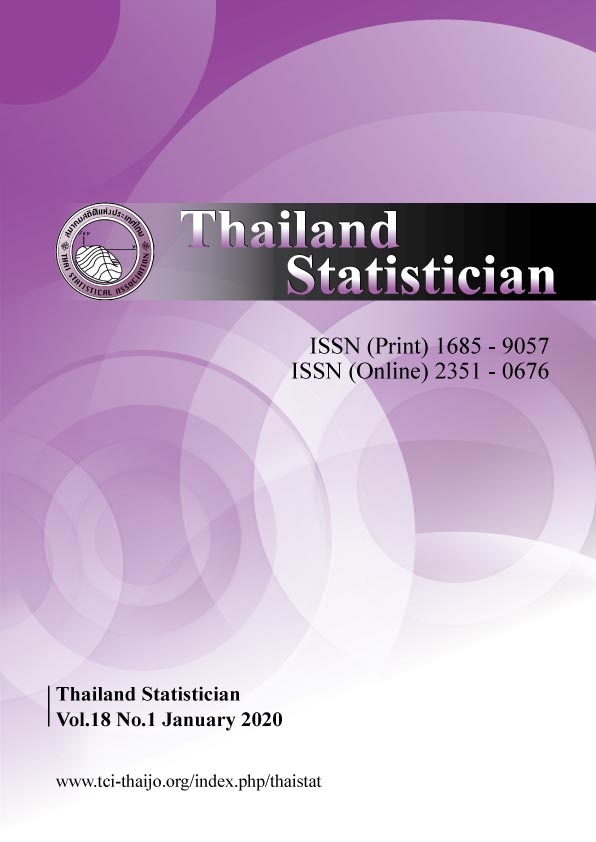The Effect of the Likert Point Scale and Sample Size on the Efficiency of Parametric and Nonparametric Tests
Keywords:
Likert point scale, sample size, parametric test, nonparametric testAbstract
This research aimed to study the effect of the Likert point scale and sample size on the efficiency of testing statistics of location difference between three populations using both parametric testing (One-way ANOVA: F test) and nonparametric testing (Kruskal-Wallis test: K-W test). The simulation of three distributions consisted of a normal distribution, positive skewness and platykurtic distribution, and a negative skewness and leptokurtic distribution. Specifically, the Likert point scale used included 5 points, 7 points and 10 points and sample sizes consisting of 15, 30, 50 and 100. The simulation study showed that the Likert point scale highly affected controlling the type I error. Specifically, the 7 and 10 points could control the type I error, both the F test and K-W test, for all conditions where populations had a normal and positive skewness and platykurtic distributions. Regarding the population having a negative skewness and leptokurtic distribution, it could control the type I error in cases of 7 and 10 point scales for almost all conditions with the F test. Furthermore, the study showed that the larger sample size, the higher the effect on the power of the test. Therefore, if research aims to compare the location differences of populations, a minimum of 100 samples for each group should be applied. Besides, if respondents have sufficient capability, a questionnaire with 7 or 10 point Likert scales should be employed.




